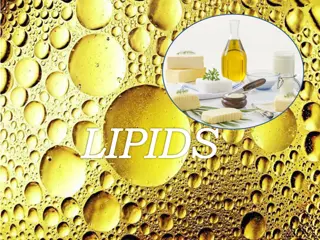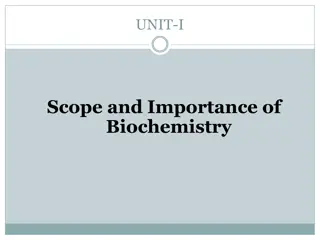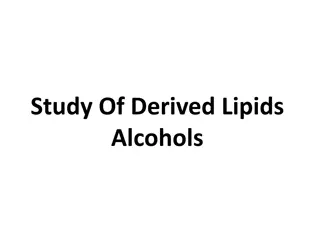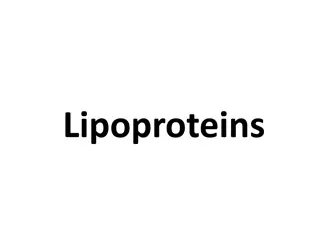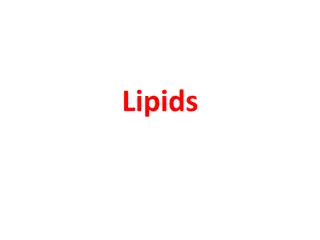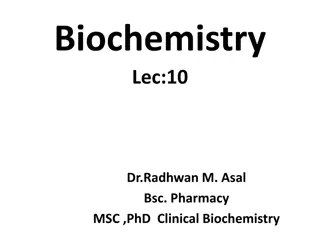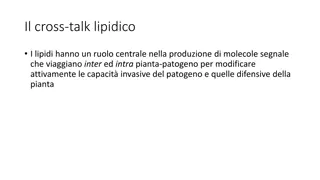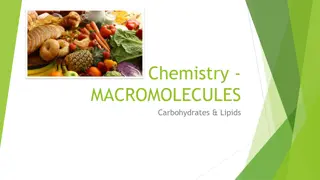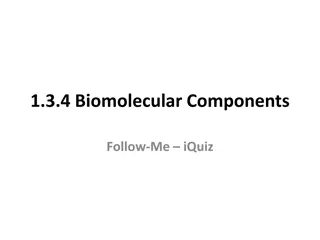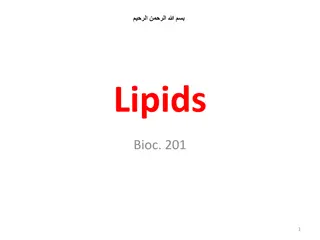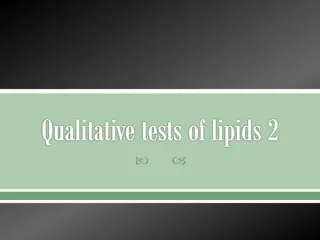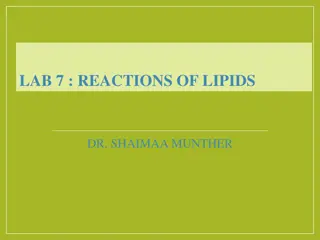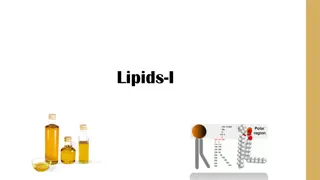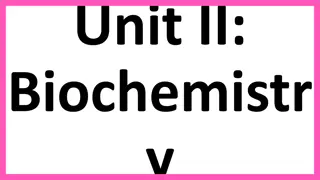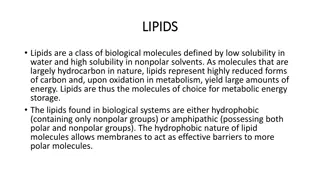Comprehensive Overview of Lipids in Biochemistry
Lipids are essential organic compounds crucial for cell structure and function. This article delves into the definition, properties, structure, and classification of lipids, highlighting their importance in biological systems. Explore the diverse types and examples of lipids, understanding their significance in various life processes and as a key component of cell membranes.
Download Presentation

Please find below an Image/Link to download the presentation.
The content on the website is provided AS IS for your information and personal use only. It may not be sold, licensed, or shared on other websites without obtaining consent from the author.If you encounter any issues during the download, it is possible that the publisher has removed the file from their server.
You are allowed to download the files provided on this website for personal or commercial use, subject to the condition that they are used lawfully. All files are the property of their respective owners.
The content on the website is provided AS IS for your information and personal use only. It may not be sold, licensed, or shared on other websites without obtaining consent from the author.
E N D
Presentation Transcript
StudyMafia.Org Lipids Biochemistry Submitted To: Submitted By: Studymafia.org Studymafia.org
Table Contents Definition Introduction Properties of Lipids Structure of Lipids Classification of Lipids Types of Lipids Examples of Lipids Importance of Lipids Conclusion 2
Definition Lipids are organic compounds that contain hydrogen, carbon, and oxygen atoms, which form the framework for the structure and function of living cells. 3
Introduction These organic compounds are nonpolar molecules, which are soluble only in nonpolar solvents and insoluble in water because water is a polar molecule. In the human body, these molecules can be synthesized in the liver and are found in oil, butter, whole milk, cheese, fried foods and also in some red meats. 4
Properties of Lipids Lipids are a family of organic compounds, composed of fats and oils. Listed below are some important characteristics of Lipids: Lipids are oily or greasy nonpolar molecules, stored in the adipose tissue of the body. Lipids are a class of compounds characterised by their solubility in nonpolar solvents and insolubility in water. 6
Properties of Lipids Lipids are a heterogeneous group of compounds, mainly composed of hydrocarbon chains. Lipids are energy-rich organic molecules, which provide energy for different life processes. Lipids are significant in biological systems as they form a mechanical barrier dividing a cell from the external environment known as the cell membrane. 7
Classification of Lipids Nonsaponifiable Lipids A nonsaponifiable lipid cannot be disintegrated into smaller molecules through hydrolysis. Nonsaponifiable lipids include cholesterol, prostaglandins, etc 9
Classification of Lipids Saponifiable Lipids A saponifiable lipid comprises one or more ester groups, enabling it to undergo hydrolysis in the presence of a base, acid, or enzymes, including waxes, triglycerides, sphingolipids and phospholipids. 10
Types of Lipids There are two major types of lipids- simple lipids and complex lipids. Simple lipids are esters of fatty acids with various alcohols. For eg., fats and waxes. On the contrary, complex lipids are esters of fatty acids with groups other than alcohol and fatty acids. For eg., phospholipids and sphingolipids. 11
Examples of Lipids Waxes Waxes are esters (an organic compound made by replacing the hydrogen with acid by an alkyl or another organic group) formed from long- alcohols and long-chain carboxylic acids. Waxes are found almost everywhere. The fruits and leaves of many plants possess waxy coatings, that can safeguard them from small predators and dehydration. 12
Examples of Lipids Phospholipids Triacylglycerols and phosphoacylglycerols are the same, but, the terminal OH group of the phosphoacylglycerol is esterified with phosphoric acid in place of fatty acid which results in the formation of phosphatidic acid. 13
Examples of Lipids Steroids Our bodies possess chemical messengers known as hormones, which are basically organic compounds synthesized in glands and transported by the bloodstream to various tissues in order to trigger or hinder the desired process. 14
Examples of Lipids Cholesterol Cholesterol is an important lipid found in the cell membrane. It is a sterol, which means that cholesterol is a combination of steroid and alcohol. In the human body, cholesterol is synthesized in the liver. 15
Importance of Lipids Lipids play a very important role in our body. They are the structural component of the cell membrane. They help in providing energy and produce hormones in our body. They help in the proper digestion and absorption of food. They are a healthy part of our diet if taken in proper amounts. They also play an important role in signalling. 16
Conclusion Lipids are organic compounds that are fatty acids or derivatives of fatty acids, which are insoluble in water but soluble in organic solvents. For eg., natural oil, steroid, waxes. 17
Thanks To StudyMafia.org


